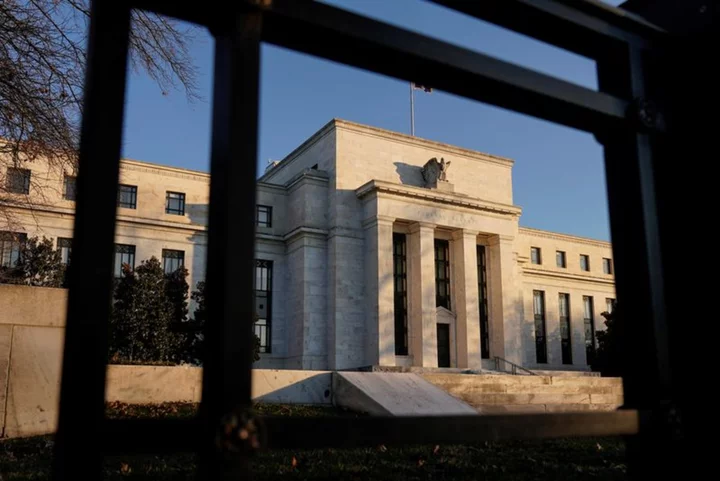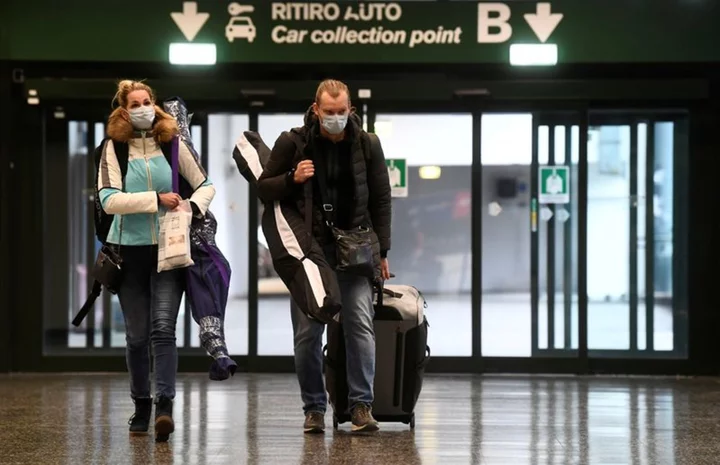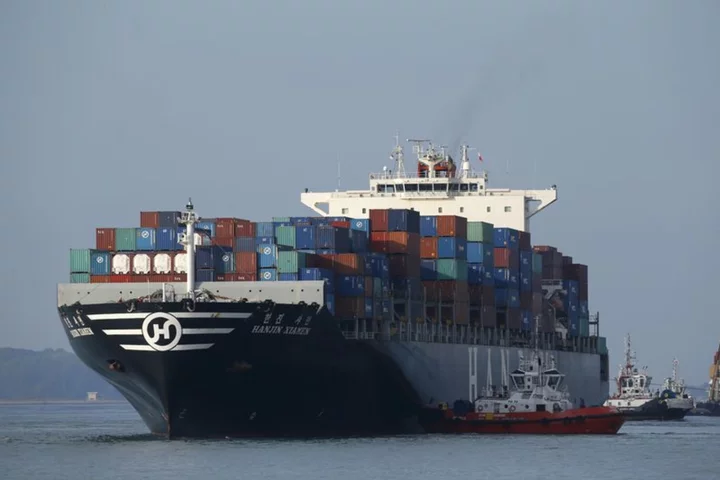By Davide Barbuscia
NEW YORK Several parts of the U.S. Treasury yield curve have reached deeper levels of inversion, a sign that bond investors are increasingly worried about an economic slowdown as the Federal Reserve looks set to raise interest rates further.
An inverted yield curve occurs when yields on shorter-dated Treasuries rise above those for longer-term ones, reflecting bets that the central bank will need to cut rates to buoy an economy hurt by higher borrowing costs.
The yield curve's inversions deepened in June, after Fed Chair Jerome Powell indicated that the central bank would likely raise rates two more times this year. Powell on Wednesday reiterated that two more hikes this year were likely, including an increase widely expected next month.
"Keeping rates higher for longer increases the chance that we move into a downturn," said Janet Rilling, a senior portfolio manager and the head of the Plus Fixed Income team at Allspring Global Investments. "So it is a logical reaction from investors that they would then expect, at some point, that the Fed's going to have to be more aggressive in cutting."
On Wednesday, yields on one-year Treasuries were as many as 153 basis points above those on 30-year Treasuries, the biggest inversion since 1981, according to Refinitiv data. The curve between five- and 30-year Treasuries , meanwhile, touched a low of -20.7 on Wednesday - the most inverted since March.
And the closely watched part of the curve that plots yields on two-year Treasuries against 10-year yields - a relatively reliable indicator of upcoming recession - has inverted further to below -100 basis points this week, close to the -108 bps level it touched before the March banking turmoil, in its turn the deepest since 1981.
The inversions are intensifying amid conflicting economic signals. Key areas of the U.S. economy, including housing and labor, have proven resilient despite higher rates. At the same time, however, signs of stress are piling up.
A recent Fed study showed the number of companies in financial distress was higher than during most previous tightening episodes since the 1970s, concluding that restrictive policies may contribute to a "marked slowdown in investment and employment in the near term."
(Reporting by Davide Barbuscia; Editing by Ira Iosebashvili and Sam Holmes)









